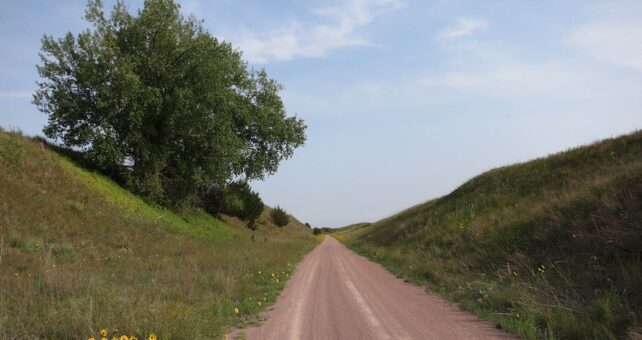Neighborhood Change and Gentrification Near Trails
Research Summary: Neighborhood Change and Gentrification Near Three Urban Trails
Authors: Greg Lindsey, Yunlei Qi, Torsha Bhattacharya, Tracy Loh Published: October 2021 Read the full article in the journal, Findings, published October 2021: rtc.li/gentrification-study
In recent years, some studies have suggested possible correlation between trails and gentrification. These studies tended to examine high-profile trails in markets with existing housing cost pressures like New York’s High Line, Chicago’s 606 and Atlanta’s Beltline. Rails-to-Trails Conservancy (RTC) convened a research team to further explore this correlation to better understand the relationship between trail development and housing stability in a broader range of neighborhoods and housing markets. The research looked at changes in gentrification indicators in the communities surrounding the three trails—the Metropolitan Branch Trail in Washington, D.C., the Shelby Farms Greenline in Memphis, Tennessee, and the Lafitte Greenway in New Orleans, Louisiana.
METHODOLOGY
To move beyond correlational studies, which can be misleading and confused with implying causation, the researchers used a case-control, pre-post design to report changes in selected variables between the time the trails opened for public use and the three years immediately following. The study focused on census block groups around three geographically diverse trails as trail impacts tend to be localized and most significant at the neighborhood level. Treatment groups comprised of trail-adjacent/abutting census block groups (CBGs), and control groups were CBGs adjoining these treatment groups. This approach focuses on neighborhoods within the same residential submarkets to eliminate the need to control for other measurable and non-measurable factors that become relevant when larger areas are studied.
If these CBGs had median household income less than the citywide median and median home value less than the citywide median household income, they were considered gentrifiable. In addition, median rent, percent owner-occupied housing, percent residents with bachelor’s degrees, percent residents in professional occupations, and percent white residents were also used as proxy indicators for gentrification. Data for this study came from the U.S. Census Bureau. The researchers conducted Hotelling’s T-squared tests between the treatment and control groups on the differences of means of each indicator.
RESULTS
The 5.5-mile Metropolitan Branch Trail in Washington, D.C., was developed next to an active railroad right-of-way and runs from the northern edge of the city to the Union Station rail terminal downtown. The trail traverses a set of economically and racially diverse neighborhoods with majority People of Color. The analysis shows greater increases in home values and household incomes occurred in the control group than in the treatment group suggesting trail proximity is influential but not the determining factor in changes in housing values and household income in a neighborhood.
The 10.6-mile Shelby Farms Greenline in Memphis, Tennessee, is located about 5.1 miles east of the central business district (CBD). The trail was built in a corridor where lower- and higher-income neighborhoods reflect historic patterns of economic and racial segregation. Following the opening of the Shelby Farms Greenline there is evidence of gentrification in both treatment and control groups. The rate of home value and household income changes were higher for the CBGs closer to the trail than for the control groups, suggesting trail adjacent neighborhoods changed faster.
The 2.6-mile Lafitte Greenway, previously a waterway, runs northwest to southeast through the city to Louis Armstrong Park north of the French Quarter in the CBD of New Orleans. The changes in home values and household incomes along the Lafitte Greenway were mixed and depended in part on the comparison being made. The control group had higher rates of changes in gentrification indicators compared to the treatment group, suggesting the former gentrified faster than trail adjacent neighborhoods.
CONCLUSION
These analyses provide some evidence of gentrification along each trail, but this evidence varies and reflects the characteristics of the contiguous neighborhoods. The impacts were greater along the Shelby Farms Greenline, but smaller near the Metropolitan Branch Trail and Lafitte Greenway, indicating adjacency to trails was associated with slower growth in the last two cases. These findings reinforce previous research results that trail are heterogeneous—their effects are context-dependent and may be highly localized, especially outside of high-cost markets. The findings suggest that there is not a universal correlation between trails, housing-cost pressures and indicators of gentrification, at least after three years of trail opening.

Donate
Everyone deserves access to safe ways to walk, bike, and be active outdoors.
